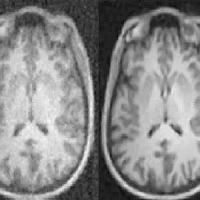An audit of communication of significant radiology findings reveals wide variation in practice across the UK with regard to the communication and monitoring of radiology reports, with many radiology departments/trusts not fully compliant with published UK guidance. Results of the audit are published in the journal Clinical Radiology.
The imaging process includes not only performing the examination, but also the issuing of the verified report and the communication of this report to the referrer, all within an appropriate time frame. Guidelines issued by the National Patient Safety Agency (NPSA) and the Royal College of Radiologists (RCR) emphasise the need for fail-safe back-up mechanisms and safety-net procedures to ensure that the communication of reports is reliable, and especially so in the case of critical, urgent, and unexpected significant findings.
However, even with the widespread use of electronic systems, only a minority of departments/trusts have and use electronic tracking to ensure reports have been read and acted upon, according to the audit team led by K.A. Duncan, MRCP, DCH, DMRD, of the Department of Radiology at Aberdeen Royal Infirmary, UK.
See Also: MIR 2014: Calling In Critical Findings
See Also: MIR 2014: Calling In Critical Findings
Dr. Duncan and colleagues conducted the audit to determine the compliance of UK radiology departments and trusts/healthcare organisations with NPSA and RCR published guidance on communicating significant radiology findings. A questionnaire was sent to all UK radiology department audit leads asking for details of their current departmental policy regarding the issuing of alerts; use of automated electronic alert systems; methods of notification of clinicians of critical, urgent, and unexpected significant radiological findings; and monitoring of results receipt.
One hundred and fifty-four (67 percent) of the 229 invited departments responded. Of these, 88 percent indicated that they had a policy in place for the communication of critical, urgent, and unexpected significant radiological findings. However, only 34 percent had an automated electronic alert system in place and only 17 percent had a facility for service-wide electronic tracking of radiology reports. In only 11 departments with an electronic acknowledgement system was someone regularly monitoring the read rate.
"Departments not compliant with current guidance on the communication of critical, urgent, and unexpected significant radiological findings should develop and implement protocols, installing software and procedures as appropriate to their circumstances," Dr. Duncan and co-authors write. "Within individual departments there should be a clear policy as to what constitutes critical, urgent, and unexpected significant radiological findings so that there is a consistent approach to issuing alerts that the referrers can rely upon."
Image credit: Wikimedia Commons
References:
Duncan KA, Howlett DC et al. (2015) Audit of radiology communication systems for critical, urgent, and unexpected significant findings. Clinical Radiology. Published online December 28, 2015. http://dx.doi.org/10.1016/j.crad.2015.11.017
Latest Articles
healthmanagement, medical imaging, radiology reports, alert system, questionnaire, UK
An audit of communication of significant radiology findings reveals wide variation in practice across the UK with regard to the communication and monitoring of radiology reports, with many radiology departments/trusts not fully compliant with published UK



























